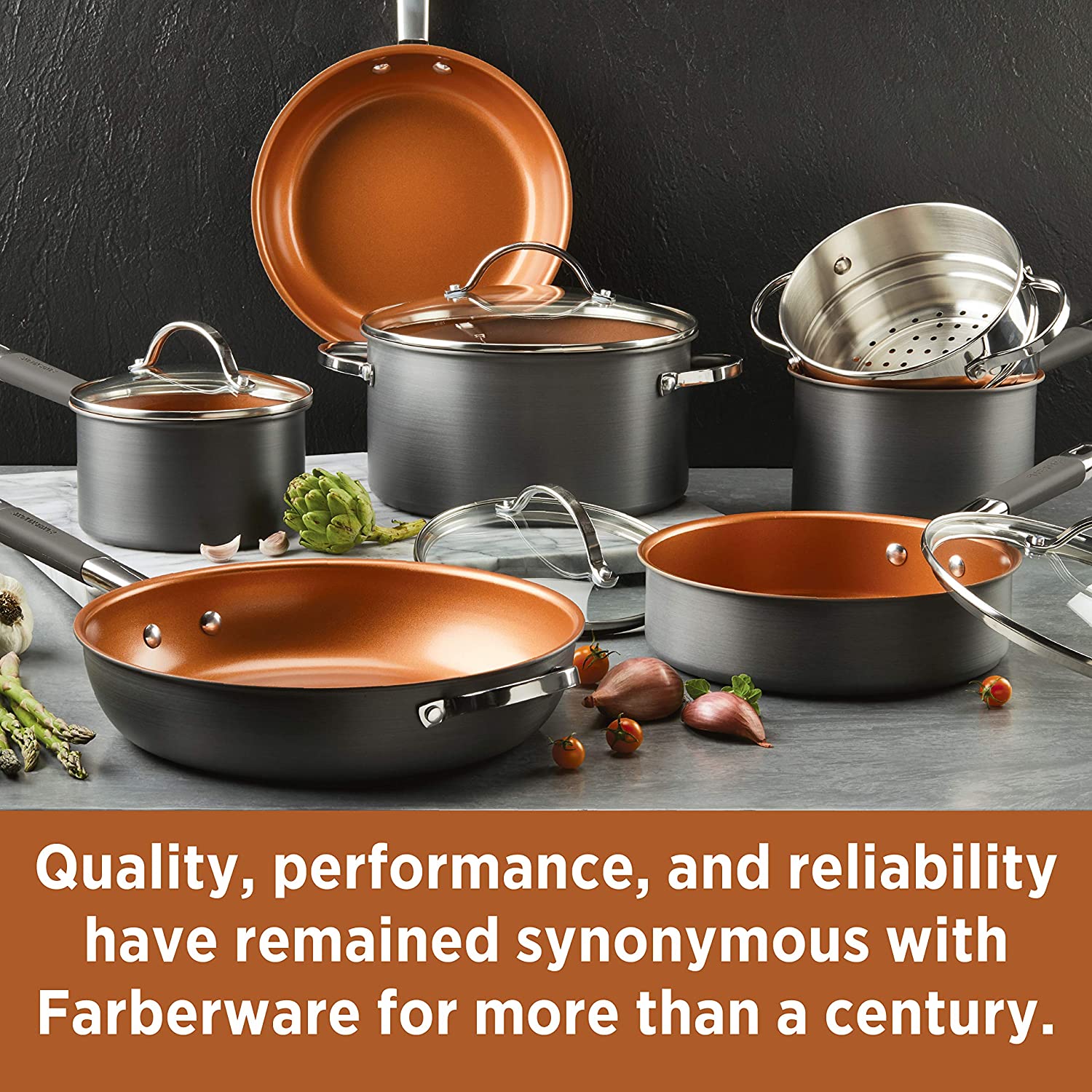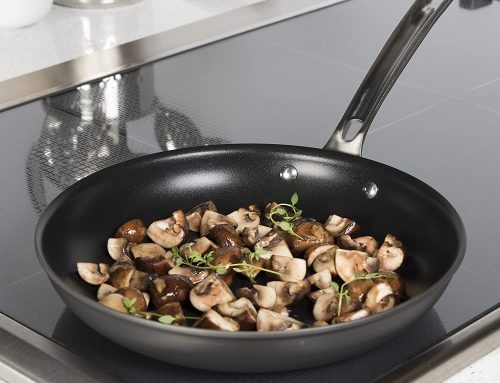What are the best pots and pans for cooking? Some American experts highlight all the advantages and disadvantages of various materials that are used to make pots and pans.
What materials must they be made of to guarantee us healthy as well as good food? Some American experts provide us with useful information for choosing.
Among the many effects of the pandemic, there has also been a great return to home cooking. While we were often out at lunchtime, now many people, still in the smart working, cook at home. It could therefore be the right time to review the quality of the pots and pans we use every day.
The issue of the safety of the tools we use in the kitchen is always very “hot” as consumers in recent years have become more careful about their purchases to limit exposure to industrial chemical products.
A special of the US magazine Discover dealt with the matter which contacted some experts (scientists, endocrinologists but also chefs) to learn more about the main materials with which pots and pans are made. Useful hints to choose the best ones with which to cook in complete safety, avoiding as much as possible exposure to substances harmful to our health.
But now let’s see what the experts have underlined concerning each material with which pots and pans can be made.

For non-stick pans, Teflon is the safest
There has been a lot of discussion in recent years about non-stick pans. This type of coating, known commercially as Teflon, coats metal pans with a tough synthetic resin to create a slippery surface.
Its chemical name is polytetrafluoroethylene or PTFE. Historically, it was made using PFOA or perfluorooctanoic acids, these are part of a group of chemicals considered endocrine disruptors but also linked to kidney disease and immune system problems.
The American FDA, already in 2016, collaborated with companies to phase out the use of PFOA and other similar substances in all products that come into contact with food. However, manufacturers are not required to disclose all of the ingredients they use in their coatings.
What did the experts say about these pans?
Suzanne Fenton, a reproductive endocrinologist at the National Institutes of Environmental Health Sciences (NIEHS), and Olga Naidenko, vice chair of scientific investigations at the Environmental Working Group (EWG), argue that the Teflon coating isn’t necessarily dangerous if accidentally ingested due to pan scratches or nicks.
What is more concerning, however, is when a non-stick PTFE pan is used over high heat, such as searing a steak or leaving a burner on by mistake.
The molecular bonds in the coating begin to break down at around 500 degrees, according to a report on household chemical coatings by Michael Michalczyk, a chemical consultant. In this case, non-stick pots or pans can then release dangerous fumes that irritate the respiratory system.
According to Dr. Naidenko, PTFE coating today is essentially the same as the older versions, only made with much smaller amounts of PFOA. But she adds that:
“The risk of it overheating and damaging our lungs – that risk remains. Those pans shouldn’t be overheated [during] their lifetime – that would be worrying.”
The two American experts then highlighted that the health hazards represented by Teflon pans are a marginal risk compared to the environmental contamination associated with the production and disposal of these products. According to the EWG, PFAS, a group of chemicals that PFOAs belong to, can be found in the drinking water of many US cities.
Chef J. Kenji Lopez-Alt, the author of the cooking science book The Food Lab and another expert contacted by the American magazine, said he rarely uses non-stick pans, and when he does it is only for low-temperature cooking, like cooking an omelet, where having a non-stick pan offers great advantages.
Read also: Are non-stick pans safe?
Ceramic

Lately, those who want to avoid PFOA often choose ceramic cookware. These most often boast labels such as “PTFE and PFOA-free” or “non-toxic” and “healthy”. But, because they’re a relatively new non-stick alternative, experts say the long-term effects on health and the environment aren’t well known.
Cookware marketed as “nonstick ceramic” isn’t just made of ceramic or clay. Many products labeled ceramic include a metal core with a coating that likely contains silica.
The downside to ceramic nonstick, according to experts, is that the coating doesn’t last as long as PTFE-based cookware. According to Dr. Naidenko, since it is difficult to know what the exact contents of these coatings are :
“Even if one has a pan that doesn’t contain much PTFE, one still shouldn’t overheat something in a ceramic pan.”
Cast iron

Cast iron is one of the most reliable and oldest materials used in the kitchen. However, cast iron pans are quite heavy, which for some may be reason enough not to even consider them.
Precisely because of their weight and density, cast iron cookware can retain heat much longer than other metals such as aluminum. However, according to chef López-Alt, they don’t distribute heat very evenly.
Seasoning foods in a cast iron skillet—that is, adding oils and fats and heating—creates a reaction between oil and iron that forms a somewhat nonstick black layer, a polymer, says chef Lopez-Alt. The surface resists well to most types of cooking and prevents food from sticking, although acidic foods such as tomatoes and vinegar can break down the coating that forms.
Contrary to popular belief, cast iron can be washed with soap without damaging the surface, but leaving it wet with water can cause it to rust.
Chef Lopez-Alt claims that:
“The idea that you can’t clean cast iron with soap is just a myth that no longer applies” (as old soaps containing lye affected cast iron but modern soaps no longer use this ingredient).
He also points out that small amounts of iron can end up in food, but that this could even be a boon for people who are deficient in this mineral.
Carbon steel and stainless steel

Steel pans are among the most common and popular due to their long life and ability to store heat energy compared to other metals. Stainless steel also usually consists of added materials, such as chromium or nickel, and a conductive core such as aluminum or copper. Carbon steel, on the other hand, is just steel.
Carbon steel, common for woks and crepe pans, is more like cast iron: It has some non-stick properties and is very durable and heat resistant, but it can also rust. Stainless steel can be put in the dishwasher, unlike carbon steel, and doesn’t react as much with acids.
Overall, both are scratch-resistant and safe surfaces to cook on. Dr. Fenton favors stainless steel cookware, while Lopez-Alt favors carbon steel cookware:
“My real advice would be to learn to use carbon steel because it’s the best,” he says.
Aluminum and anodized aluminum

A pan can be made entirely of aluminum, or this material could be mixed with other metals or form a layer inside the pan. It’s less dense than metals like steel or iron, so it doesn’t retain heat very well. This means that it can cool down rapidly, but can conduct or transfer heat very well.
According to Lopez-Alt, chefs in restaurants often use aluminum cookware because their industrial burners can hold a stronger heat than a typical home kitchen stove.
Anodizing gives aluminum a very hard, non-corrosive surface, the only downside is that you can’t put these types of pans in the dishwasher or you risk ruining the surface.
While there has been researched into the links between aluminum and Alzheimer’s, aluminum cookware is not currently considered a health risk. The Centers for Disease Control and Prevention ( CDC) states that while aluminum cookware can transfer aluminum into foods, especially acidic foods:
“The levels of aluminum found in processed foods and foods cooked in aluminum pans are generally considered safe.”
Read also: Is aluminum in contact with food safe?
Copper
Copper is the material of choice for professional chefs due to its great conductivity, which means it heats up quickly and evenly. But copper shouldn’t come into contact with food on its own, because it can react with acidic ingredients like wine, juice, or vinegar and migrate into the food, according to the FDA‘s 2017 Food Code.
“While copper is very good for its warming properties, too much copper is not good for the body, especially for children. It can also cause diarrhea and nausea,” says Dr. Naidenko.
Many copper pots or pans are lined with metal such as tin or stainless steel for this very reason.
Tin can wear out more easily than steel, so anyone with an old tin-coated copper pan should make sure it has no scratches.
Finally, copper cookware can be quite expensive and can oxidize in humid air, leaving a green discoloration.
The conclusions of the experts
As you may have understood, each type of pot or pan has advantages and disadvantages. A general rule is to choose what fits your needs well and steer clear of products whose materials are not clearly defined.
Generally, experts say, you can’t go wrong by choosing pans that are heavy and that are durable, and long-lasting. But even non-stick pans can find their place in modern kitchens, reserving their use for the preparation of delicate dishes that tend to stick.
Anyone who has a pot or pan to replace should consider which ones will last the longest and be aware that, even if the materials are considered safe for humans, they could become dangerous for the environment when they end up in landfills.
As Dr. Fenton pointed out, the safety of the pans and pots we have in the kitchen could depend on how we handle them:
“I think pretty much all the cookware out there right now is pretty safe, as long as you take good care of it.”








